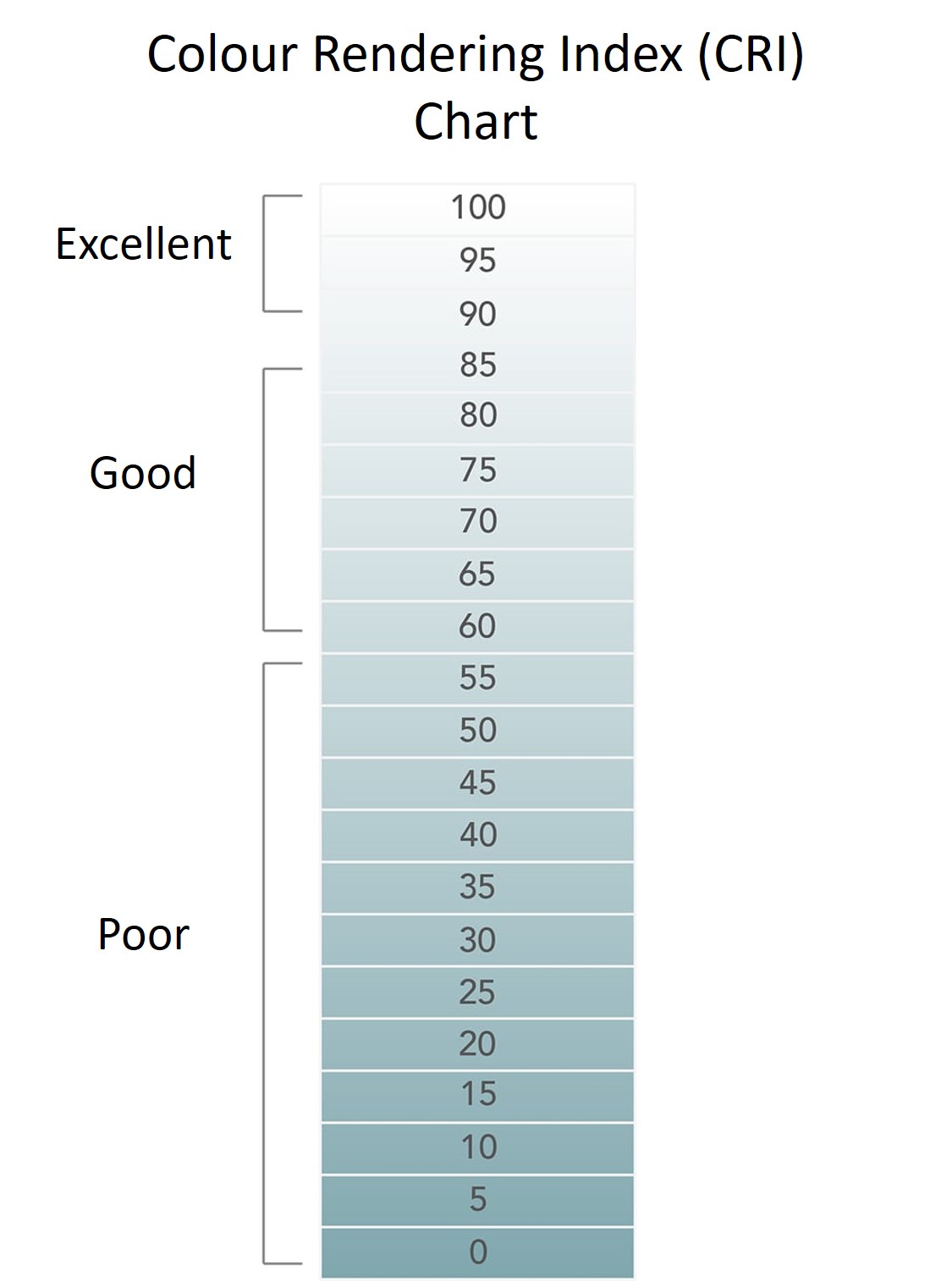Is it essential that a retailer focus on implementing the right lights in the right areas? Will the installation of a dynamic lighting system lead to increased sales?
In this NEW series, we give you a basic understanding of retail lighting, its importance and the many benefits of upgrading your lighting system…
Part 1 – Colour Rendering Index (CRI)
Part 2 – Correlated Colour Temperature (CCT) and the effects on products, shoppers and employees
Part 3 – The types of lighting in a retail store
Colour Rendering Index (CRI)
Too often, the implementation of the best retail lighting design and installation is overlooked. However, the benefits far outweigh the cost. Today, lighting in a retail application is so much more than just creating a certain ambiance. Rather, it has the potential to create a rich experience for the customer and, studies even suggest that, it could turn a window shopper into a loyal customer.
For lighting within this application, it is vital that a retailer understands the type of lighting that should be installed in a store, as studies also suggest that lighting affects a shopper’s cognitive purchase behaviour.
Understanding CRI
If you’ve been shopping for LEDs, you may have come across the term “CRI” or “Colour Rendering Index”. Knowing what CRI is, and how important it is in a retail application, will help you make an informed decision regarding your store’s LED lighting.
Defined, Colour Rendering Index is “an index that measures the ability of a light source to reveal colours of objects in comparison to a natural light source”.
It is a measurement of light in relation to its effect on the appearance of a colour. The CRI is used so that the appropriate lighting is selected based on the environment and the customers’ needs.
The CRI is measured by comparing the colour rendering of the artificial light source to that of a natural light source. The CRI is measured as a number between 0 and 100. At zero (0), all colours look the same. A CRI of 100 shows the true colours of the object. CRI is used to measure artificial, white light sources. The colour temperature of the light source must be determined so that the appropriate daylight spectrum is selected to use for comparison. Then, the light source in question will be virtually shone onto a series of virtual colour swatches, called test colour samples (TCS), with the reflected colour measured.
The colour rendering index chart can be seen in the figure below.
If the bulb has a CRI rating at the upper end of the scale then it will produce a more accurate colour rendering of the objects it illuminates. It is vital to know and understand the area that is being illuminated so that the surroundings are clear, bright and as close to how it would look if in an outdoor and natural setting.
As seen in the figure below, a greater CRI vastly improves the appearance of an object, compared to the images with lower CRI.

Good LED lightbulbs for color temperatures above 4000K are more superior when compared to other types of lighting, as they provide a better CRI. However, for Warm White, incandescent and halogen light sources have a better CRI. LED lightbulbs have CRI ratings in the range of 80 and above. In a retail environment this means that the consumer can enjoy more vibrant and realistic colours. On the contrary, high pressure sodium, mercury lights and fluorescent lights have CRI ratings of approximately 24, 49 and 50-85 respectively.
The table below indicates the CRI rating required by a lightbulb for the different applications.

In sum, retail lighting should entice customers to spend their time (and money) in the store. Thus, it is vital for a retailer to know and understand how lighting affects how customers feel in their store.
Research conducted indicates that cool white lights have the effect of making an area feel more spacious, modern and clean. However, customers tend to feel more comfortable and safer in a store that has warmer lights.
In part 2 of the series, we discuss Correlated Colour Temperature.
Resources:
1. LEARN more about lighting here
2. DOWNLOAD our lighting catalogue
3. CHAT to our lighting experts



